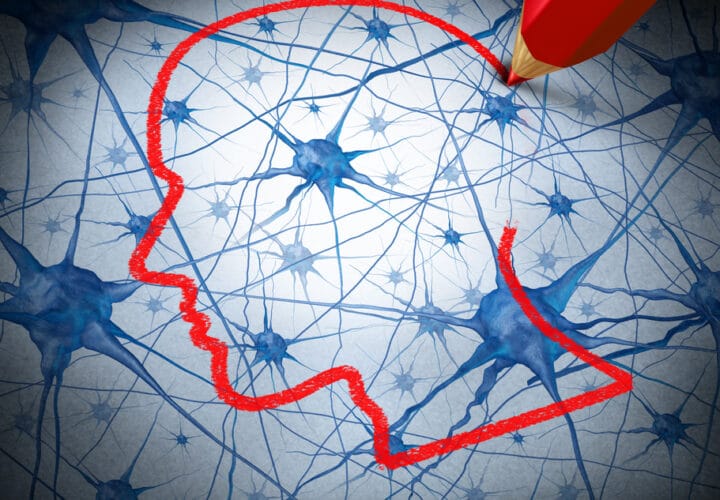Research shows two of every five cases of Alzheimer’s and related dementias are preventable. According to credible, peer-reviewed scientific studies, here are the 8 biggest risk factors for dementia.
Not every risk factor for Alzheimer’s and related dementias is within our control. But many are, and it’s estimated that a person can reduce their risk for dementia by about one -third if they address those modifiable risk factors. Dementia and Alzheimer’s disease don’t follow a one-size-fits-all diagnostic process. Some people who have multiple risk factors never develop the condition, while other adults with relatively few risk factors still end up living with dementia. Alzheimer’s disease is the most common type of dementia, followed by vascular dementia. Other types of dementia include Lewy body dementia, frontotemporal dementia, and mixed dementia.
The most well-known symptom of dementia is memory loss, but it also frequently causes mood and behavior changes and challenges with language. People living with dementia usually require long-term care and have a reduced ability to perform daily tasks.
There’s no exact science for estimating a person’s dementia risk. However, researchers have identified several risk factors that affect the likelihood of a person developing dementia as they age. Consider the following factors, but remember, there is no way to determine someone’s exact risk level.
Can you prevent Alzheimer’s?
Three of the main risk factors for dementia are not modifiable. These are sex, age and genetics. Race and socioeconomic status also play a role. Here’s a closer look at five dementia risk factors we can’t do much about:
Dementia risk increases with age
The risk of developing dementia rises as we age. It’s estimated that every five years, a person’s risk of developing dementia doubles.
Sex as a biological variable
Women represent two-thirds of Alzheimer’s cases, making them more likely to develop dementia. Women also have risk factors that are unique to them and do not affect the male population. Estrogen has a positive effect on brain health, and when estrogen decreases during menopause, the brain becomes more susceptible to dementia. Additionally, high blood pressure during pregnancy may raise the risk of dementia later in life.
Genetic risk factors for Alzheimer’s
Studies show that several genes carry an increased risk of developing Alzheimer’s disease. The most common gene believed to be connected to dementia is the APOE4 gene, but over 20 other genes may also increase Alzheimer’s risk by some degree. Only a small percentage of Alzheimer’s cases are attributable to genetics, and the genetic risk factors vary depending on race.
Race and socioeconomic status also affect dementia risk
Alzheimer’s disease is twice as likely to affect Black people as it is to affect white people. The risk for Latinx people is one and a half times higher that of the white population. Since minorities have been known to face discrimination in healthcare or encounter more barriers when it comes to accessing quality care, they may also receive diagnoses of Alzheimer’s and dementia later than their white counterparts. All of this is compounded by the fact that Alzheimer’s drug trials are often disproportionally focused on white participants. More diversity is needed in trials in order to fully understand how the disease differs by race and what treatments are effective for whom.
The race factor is further complicated by socioeconomic status. When race and poverty intersect, inequality is exacerbated, and the risk of dementia rises. People with less access to quality healthcare, higher education, and healthy diets are more likely to develop dementia. Factors like lack of access to green space or more air pollution also have associations with brain health — and these issues are tied to socioeconomic status as well. Social and economic disadvantages, beginning as early as childhood, can lead to cognitive risks.
All this said, there’s good news: There are risk factors that are within our control, too, and their influence is significant. In fact, it’s estimated that 40 percent of dementia cases result from the following modifiable risk factors.
The 8 biggest modifiable risk factors for dementia
1. High blood pressure
Consistently having high blood pressure damages the blood vessels of the brain. It can cause clotting and bleeding, which in turn can cause cognitive impairment. A study out of the National University of Ireland at Galway exhibited a significant connection between high blood pressure and heightened dementia risk.
This factor is modifiable: the study also showed that treatment for high blood pressure could lower a person’s risk for dementia and general cognitive decline. Dr. Michelle Canavan told Being Patient in 2020, “The effect of lowering blood pressure on the brain not only reduces the risk of stroke but also reduces the amount of damage to blood vessels in the brain. When brain blood vessels, particularly small blood vessels, are subjected to prolonged high blood pressure levels, they can be damaged, causing brain cell death and dysfunction, resulting in slower brain processing and decline in memory over time.”
2. Substance use
Tobacco and alcohol are both known to increase the risk of developing dementia and other types of cognitive impairment. Alcohol can cause brain shrinkage, and the brains of people with alcohol abuse problems become smaller and lighter than those who do not abuse alcohol.
A study in South Korea tracked the health of over 45,000 men over age 60 1,644 of whom were diagnosed with dementia during the study. The researchers found that the people who had been non-smokers for the longest had the lowest dementia risk.
“Our findings suggest that smoking cessation, or reduced smoking, might be helpful in reducing the risk,” lead author Dr. Daein Choi, a researcher at the Seoul University College of Medicine, wrote at the time. Quitting smoking and keeping alcohol use in check is the best way to decrease your substance-related risk for dementia.
3. Cholesterol
Too much cholesterol builds up into plaque in the arteries. Clogged arteries can lead to heart attack and stroke – and each of these conditions raises a person’s risk of dementia. Cholesterol can also build up in the brain, triggering beta-amyloid build-up, a protein found in the brains of Alzheimer’s patients.
A study by Lancet Health Longevity indicated that high cholesterol in middle age leads to an increased risk of dementia and Alzheimer’s disease.
“In people with cholesterol measured below age 65 the risk of dementia being diagnosed more than 10 years later was about 60 percent higher in those with LDL cholesterol levels above 200 mg/dL (5.17 mmol/L) compared to those with levels less than 100 mg/dL (2.6mmol/L),” lead author Dr. Masao Iwagami wrote at the time. “The strength of this association is comparable with other modifiable risk factors such as alcohol consumption and greater than for blood pressure.”
The Mediterranean diet has been linked in various studies with lowering cholesterol. Experts have suggested the Mediterranean diet as a healthy diet alternative for those worried about Alzheimer’s disease and other health risks. Several of these factors are interconnected – for instance, quitting smoking can reduce cholesterol as well as decrease one’s Alzheimer’s risk.
4. Diabetes
Alzheimer’s disease and diabetes share a genetic risk factor, the ApoE4 gene. Diabetes is caused by the pancreas not producing enough insulin, a hormone that regulates how sugar is distributed throughout the body. When the brain doesn’t get enough sugar, fatigue and cognitive impairment happen in the short term, while metabolism changes and cellular damage occur in the long run. Each of these factors increases the likelihood of someone developing dementia.
Type 2 diabetes is believed to double a person’s dementia risk and possibly lead to developing dementia years earlier than someone without diabetes. Additionally, the earlier you develop diabetes, the higher the likelihood that you will eventually develop dementia.
Diabetes and dementia also share a subset of modifiable risk factors. Regular exercise and healthy eating are lifestyle changes that reduce the risk of both conditions.
5. Physical activity
Maintaining a baseline level of consistent physical activity is an excellent way to both care for your body and reduce dementia risk. Although physical activity has long been believed to be good for brain health, experts are only recently beginning to reach a consensus on the specific types of exercise that are best for reducing dementia risk.
Studies have shown that vigorous exercise is likely the best type of exercise to reduce dementia risk, but that even low-level exercise like doing chores has a positive effect.
6. Depression
The exact nature of the relationship between depression and dementia is unclear, but clinical studies have suggested that depression is a risk factor for Alzheimer’s disease. On the flip side, people with dementia have high rates of depression – the two conditions are heavily linked.
A study in the Archives of General Psychiatry found that people who developed depression late in life had a 70Percent increased risk of dementia, while people who were consistently depressed since middle age had an 80Percent increased risk.
It’s more likely that untreated depression will cause cognitive problems later in life than treated depression. Treating depression is a collaborative process generally involving talk therapy and possibly medication. Seeking help for depression is advised for anyone whose daily life is interrupted by the condition.
7. Social interaction or social isolation
Maintaining social connections as we age is vital to maintaining overall health. People living with dementia can become even more isolated as their symptoms worsen. A recent study in Neurology indicated that social isolation can cause changes in brain structure, leading to an increased risk of dementia.
Social interaction earlier in life can improve cognitive function, and continued social interaction after a diagnosis can slow down the progress of dementia. Social engagement is believed to be equally important as other lifestyle factors in maintaining cognition.
8. Traumatic brain injury
Severe brain injuries or sustained head trauma increase the likelihood of dementia, even many years after the injury. One study estimated that it could increase one’s risk by up to 80Percent.
Though some traumatic brain injuries result from freak accidents that are out of our control, there are still protective measures everyone should take. Anyone who engages in sports or activities that carry the risk of head injury should wear a helmet. Wear a seatbelt while driving, and don’t drive under the influence. For older adults worried about falls in the home, consider installing safety bars or handrails.





